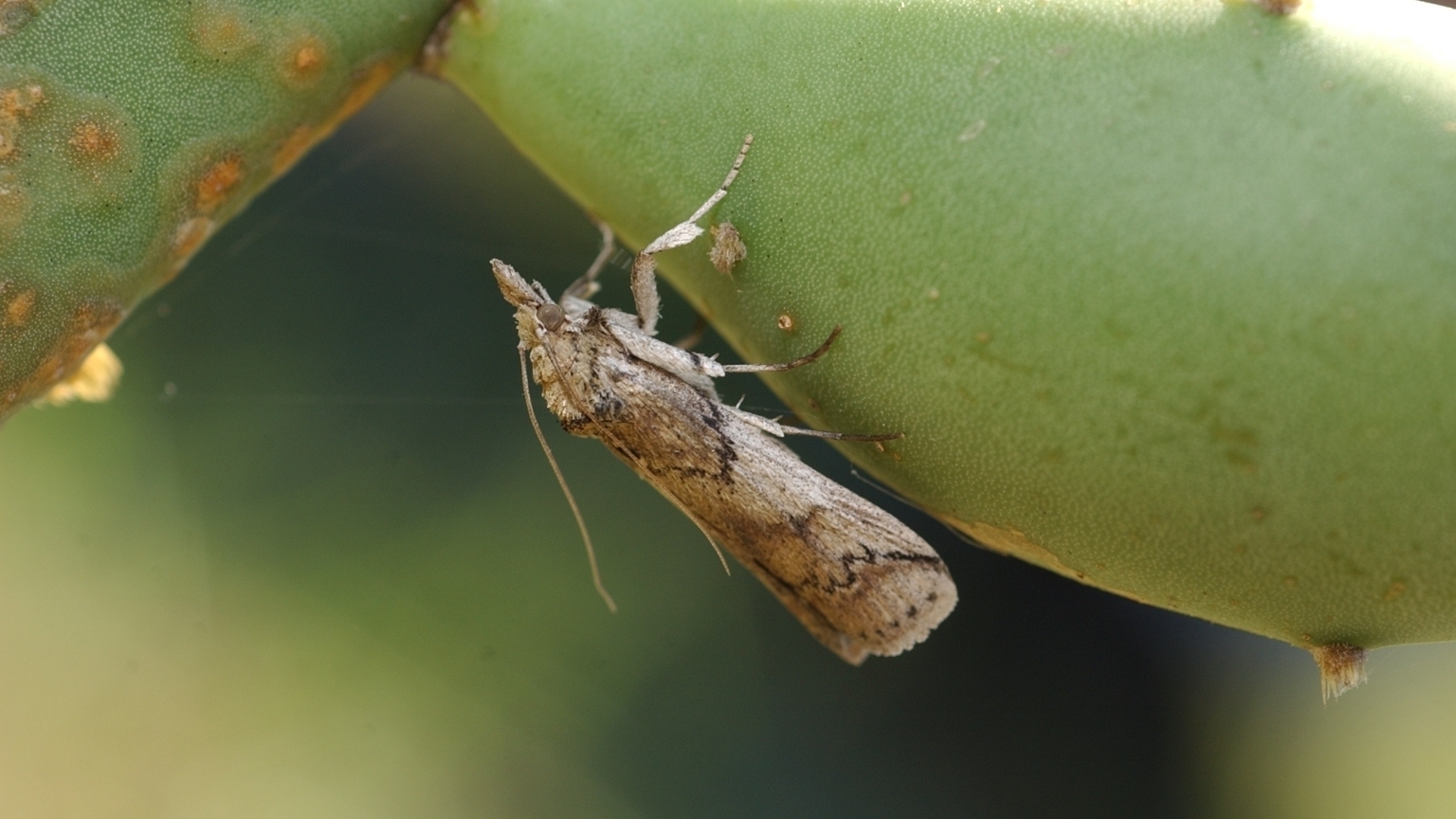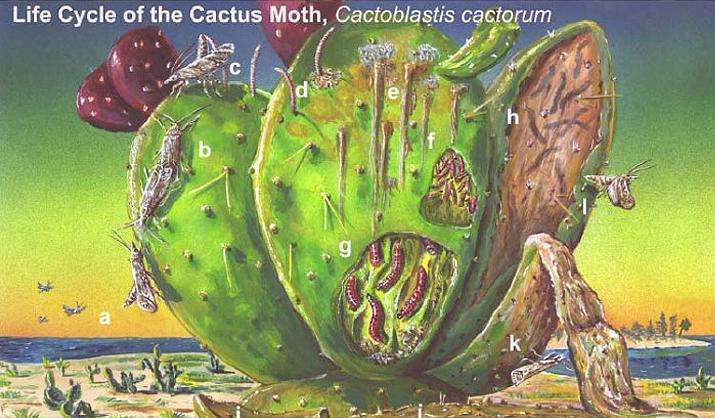South American Cactus Moth

The South American cactus moth is a pest of Opuntia species (also known as prickly pear cactus), and an occasional pest of Nopalea, Cylindropuntia, and Consolea cactus species. They develop from eggs to larvae to moths. The larvae feed as a colony, tunneling through and hallowing out cactus pads, which eventually kills the plant.
The moth–native to Argentina, Uruguay, Paraguay, and Brazil—found its way to Florida in 1989, most likely by natural spread through “island hopping” from the Caribbean or U.S. interceptions of Cactoblastis moths in nursery stock from the Caribbean as early as 1981. Prickly pear cacti are used and valued in landscapes for plant diversity, to reduce wind and erosion, and as a habitat for nesting animals.
Within a short period of time, this moth can destroy whole stands of cacti. Here's what to look for:
- Appearance
- Growing larvae are greenish-gray in color and 0.25 centimeters long. As they continue to get bigger, larvae develop a rich salmon orange to red color with blackish spots that form bands. Adult moths are a grayish-brown color with a wingspan of 0.86 to 1.4 inches.
- Eggs
- After an incubation period, the female deposits an egg stick, which resembles a cactus spine, consisting of an average of 70 to 90 eggs on a pad of the prickly pear. Eggs develop and hatch into larvae.
- Plant Tissue
- Affected plant tissue will yellow and ooze fluids. They'll also have insect droppings.

People can stop the South American cactus moth from spreading by not moving infested cacti or cacti you suspect might be infested. The following states are quarantined for the pest: Alabama, Florida, Georgia, Louisiana, Mississippi, and South Carolina. Remove and destroy any infested cacti in these areas.
Report Plant Pests and Diseases
Have you seen this pest or signs of pest damage? Immediately report your findings.
Find your State plant regulatory official
Find your State plant health director
Controlling the South American Cactus Moth
Regulatory Information
- Federal Regulations
- Regulated Areas (145.08 KB)
- Regulated Articles (157.3 KB)

